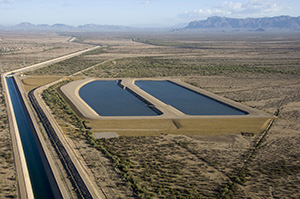The Facts about Arizona’s Water Supplies
By: Pamela Pickford, President, Board of Directors | Central Arizona Project
On June 17, The New York Times published a story under the headline “Arizona Cities Could Face Cutbacks in Water From Colorado River, Officials Say.” The Times’ story stated that deliveries of Central Arizona Project water to cities such as Phoenix and Tucson could be reduced as early as 2019 and that Arizona was just now considering the prospects of such a shortage. Neither statement is accurate. Here are the facts.
First, CAP shortages are not expected to impact Arizona cities for at least 10 to 15 years. That is because cities hold the highest priority within the CAP system and so would be among the last to be cut during shortage. Guidelines adopted by the Secretary of the Interior in 2007 quantify the reductions to the CAP supply at various elevations in Lake Mead. The maximum reduction to CAP under the 2007 Guidelines is 480,000 acre-feet, which would still leave CAP 1 million acre-feet or more to deliver each year. That is enough to satisfy all CAP municipal demands—and high-priority Indian deliveries—for many years to come (those uses currently total less than 800,000 acre-feet).
Secondly, CAP is likely to experience shortage by 2017, but that shortage will primarily affect central Arizona agriculture, which is already preparing for planned reductions in their CAP supplies. Cities could see an increase in the cost of CAP water at that time, but their water deliveries will not be reduced.
Finally, Arizona has long been aware that future Colorado River shortages will impact CAP deliveries to cities and other municipal water providers. That is why the Arizona Water Banking Authority (AWBA) was created in 1995. For almost two decades now, the AWBA has been storing excess Colorado River water in underground aquifers to provide a backup supply that can be called upon when CAP deliveries to Arizona cities are reduced. To date, AWBA has stored more than 3 million acre-feet in central Arizona for just that purpose. And over the past several years, CAP and other Arizona interests have developed plans to recover that stored water.
Arizona has been planning for future CAP shortages for decades and is well prepared to deal with that eventuality. Arizona is also working with the other Colorado River Basin States and the federal government to improve the reliability and sustainability of this vital water supply in the face of ongoing drought.



